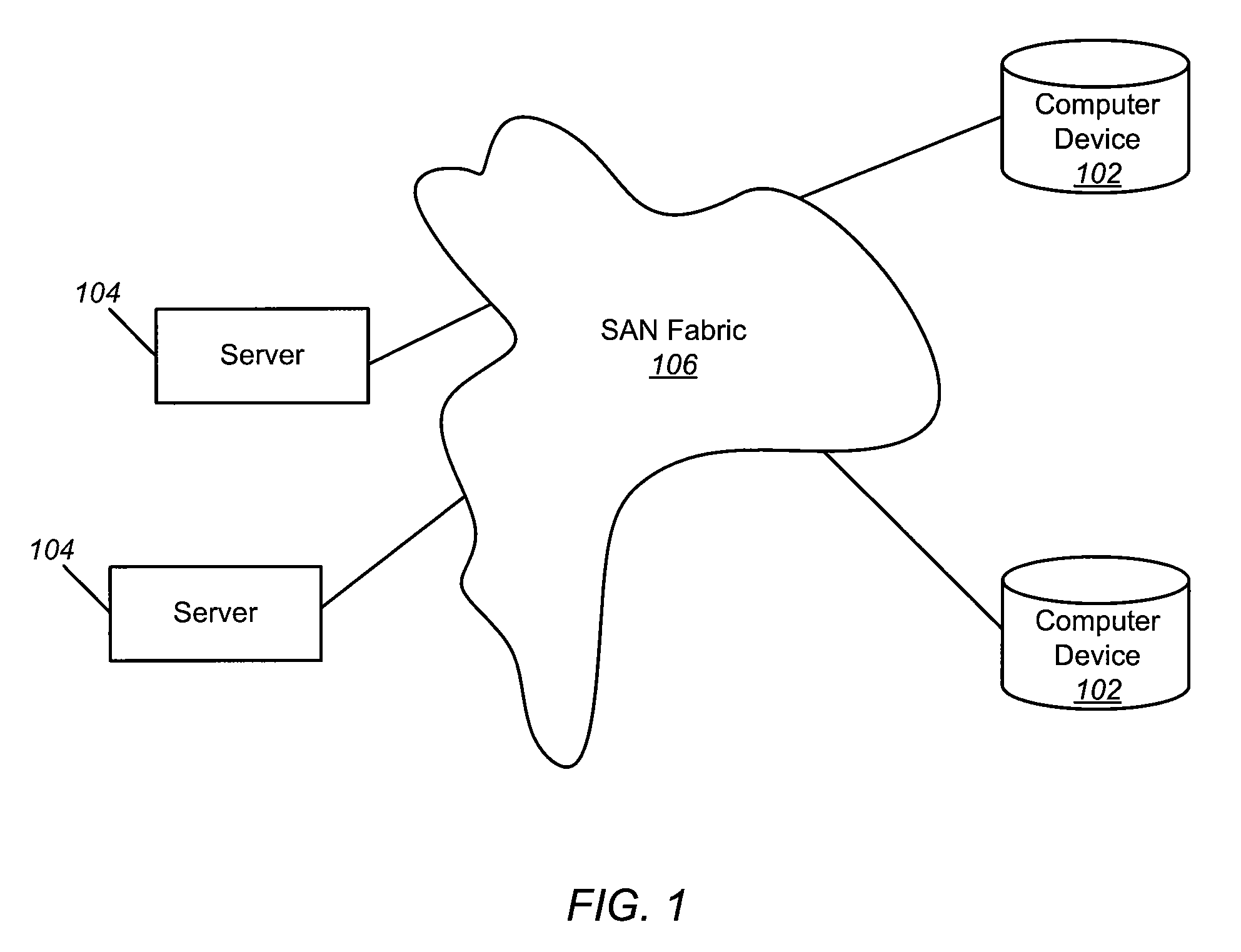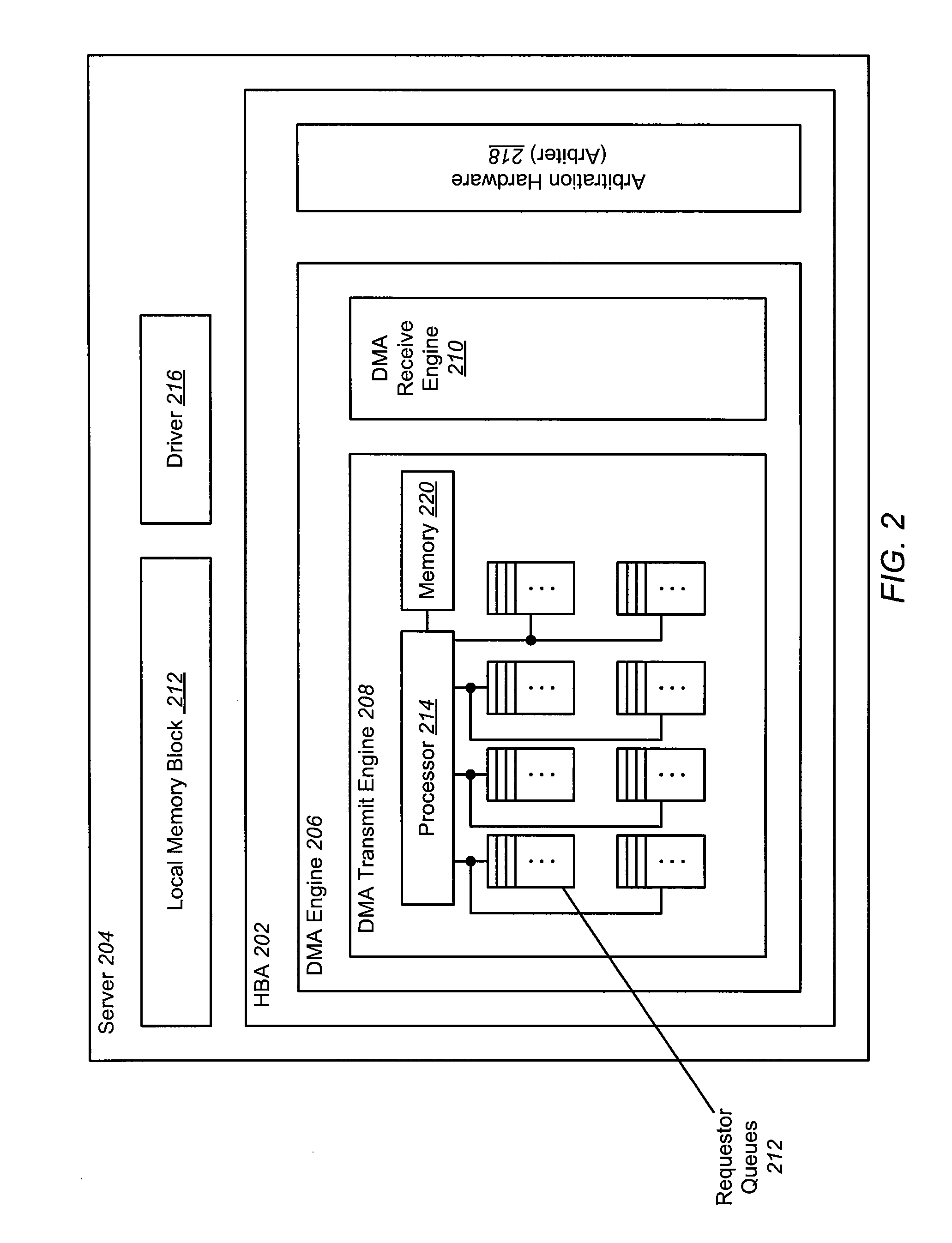Dynamically Adjustable Arbitration Scheme
a dynamic arbitration and arbitrage scheme technology, applied in the field of device access fairness, can solve problems such as fc-heavy networks that compromise the 10 gigabyte link speed of nics, and achieve the effects of increasing the service priority, and increasing the likelihood of a requestor queue being serviced
- Summary
- Abstract
- Description
- Claims
- Application Information
AI Technical Summary
Benefits of technology
Problems solved by technology
Method used
Image
Examples
Embodiment Construction
[0014]In the following description of preferred embodiments, reference is made to the accompanying drawings in which it is shown by way of illustration specific embodiments in which the invention can be practiced. It is to be understood that other embodiments can be used and structural changes can be made without departing from the scope of the embodiments of this invention.
[0015]Embodiments of the present invention are directed to a network arbitration scheme that manages device access fairness by selectively and dynamically increasing a requester queue's likelihood of being serviced. A requestor queue increases its service priority by duplicating a request entry onto a set of priority rings maintained by arbitration hardware in a host bus adapter. Duplication occurs when (1) a requestor's queue fill count (the number of descriptors stored in the queue) exceeds a watermark level or (2) a requestor's queue timer times out. In the case of time-out, the requester in the lower priority...
PUM
 Login to View More
Login to View More Abstract
Description
Claims
Application Information
 Login to View More
Login to View More - R&D
- Intellectual Property
- Life Sciences
- Materials
- Tech Scout
- Unparalleled Data Quality
- Higher Quality Content
- 60% Fewer Hallucinations
Browse by: Latest US Patents, China's latest patents, Technical Efficacy Thesaurus, Application Domain, Technology Topic, Popular Technical Reports.
© 2025 PatSnap. All rights reserved.Legal|Privacy policy|Modern Slavery Act Transparency Statement|Sitemap|About US| Contact US: help@patsnap.com



